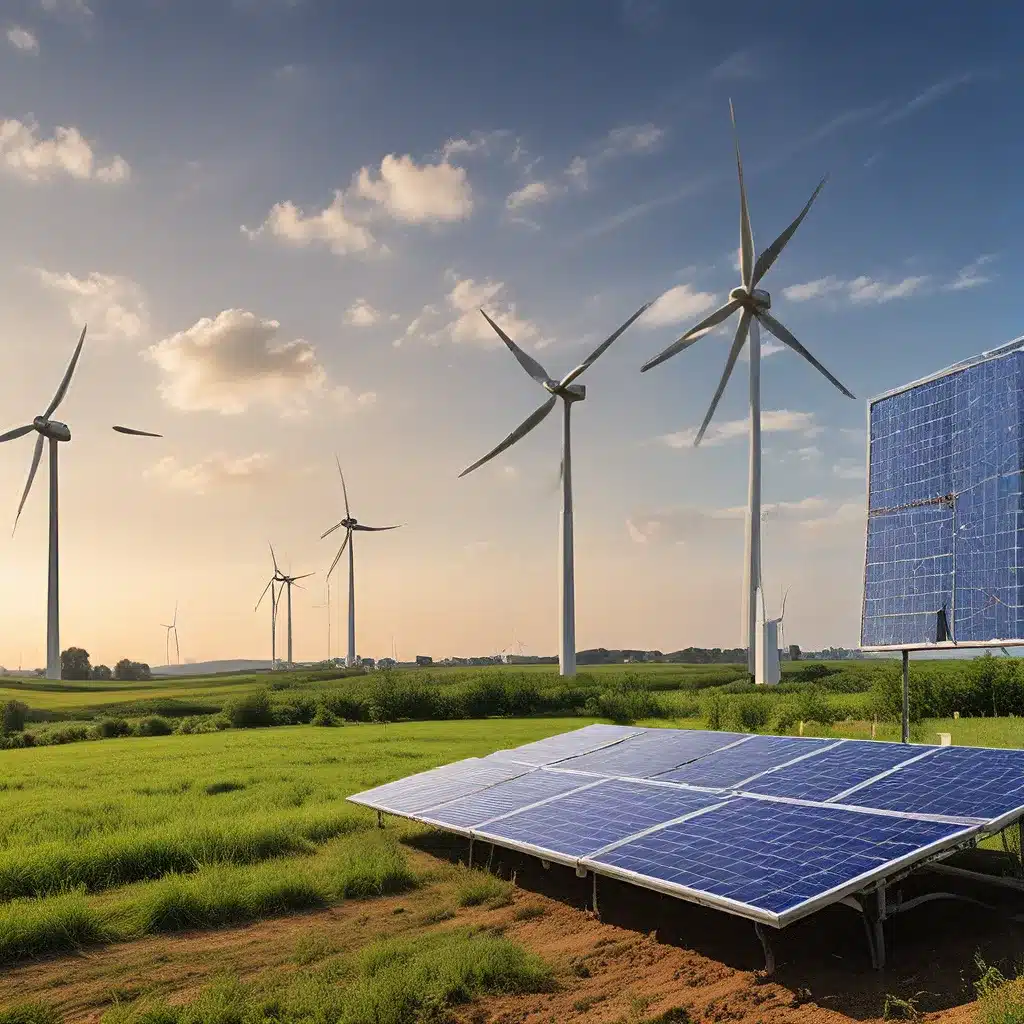
In our rapidly evolving world, where environmental concerns loom large, the need for sustainable engineering solutions has never been more pressing. But here’s a secret that might surprise you: computer science is playing a crucial role in revolutionizing the field of renewable energy and driving us towards a greener future.
Let me take you on a journey where the worlds of IoT (Internet of Things) and renewable energy collide, creating a symphony of efficiency and innovation that will leave you in awe.
Harnessing the Power of Data
As an engineer passionate about sustainable solutions, I’ve always been fascinated by the way data analysis can transform the way we approach renewable energy. By collecting and meticulously analyzing data on energy consumption, emissions, and other environmental factors, we can uncover hidden patterns and identify areas ripe for improvement.
Imagine a world where computer models can simulate the energy usage of a building under different conditions, allowing architects and engineers to design structures that minimize waste and reduce their carbon footprint. This is the power of data-driven decision making in action, and it’s changing the game when it comes to sustainable engineering.
But the data revolution doesn’t stop there. In the realm of renewable energy, computer simulations are helping engineers design more efficient wind turbines and solar panels, leading to a significant increase in renewable energy production and a decreased reliance on fossil fuels. And when it comes to energy storage systems, computer science is stepping in to optimize their performance, ensuring that renewable energy is available even when the sun isn’t shining or the wind isn’t blowing.
Revolutionizing Transportation
Another area where computer science is making waves in sustainable engineering is transportation. By analyzing traffic patterns and optimizing transportation routes, engineers can reduce emissions, energy consumption, and even improve travel times while reducing congestion. And the real game-changer? Autonomous vehicles, which rely heavily on computer algorithms to revolutionize the way we move around, ushering in a new era of safer and more efficient roadways.
But the benefits of computer science in sustainable engineering go beyond just designing and optimizing systems. The use of digital technologies also has the potential to reduce waste and improve recycling processes. For example, 3D printing technology can be used to create parts and components with less waste material, while computer vision systems can be employed to sort and recycle materials more efficiently.
Embracing the IoT Revolution
As I delve deeper into the intersection of IoT and renewable energy, I can’t help but feel a sense of excitement. The Internet of Things is transforming the way we interact with our environment, allowing us to monitor and control energy-consuming devices with unprecedented precision.
Imagine a world where your home’s smart thermostat can communicate with your solar panels, automatically adjusting the temperature to optimize energy usage and ensure you’re making the most of your renewable energy sources. Or a scenario where a network of IoT sensors can track the performance of wind turbines in real-time, enabling engineers to make quick adjustments and maximize energy output.
The possibilities are endless, and the synergy between IoT and renewable energy is only just beginning to be explored. As we continue to push the boundaries of what’s possible, I can’t help but feel a sense of wonder and optimism for the future.
Overcoming Challenges and Embracing Uncertainty
Of course, as with any revolutionary technology, there are challenges to overcome. The integration of IoT and renewable energy can be complex, and ensuring seamless communication between various systems and devices can be a daunting task. But as engineers, we thrive on problem-solving, and I believe that with the right creative thinking and collaborative spirit, we can tackle these hurdles head-on.
And let’s not forget about the element of uncertainty. As we delve deeper into the world of sustainable engineering, we’re bound to encounter new discoveries and evolving conclusions. But I see this as an opportunity, not a hindrance. By embracing the unknown and remaining open-minded, we can continue to push the boundaries of what’s possible and uncover innovative solutions that will shape the future of our planet.
A Brighter, Sustainable Future
As I reflect on the transformative power of computer science in sustainable engineering, I can’t help but feel inspired. By leveraging the incredible potential of data analysis, renewable energy optimization, and IoT-driven solutions, we are well on our way to creating a brighter, more sustainable future for all.
And let’s not forget the role of innovation in this journey. By continuing to explore the possibilities and develop cutting-edge solutions, we can unlock new opportunities and push the boundaries of what we thought was possible. So, I invite you to join me on this exciting adventure, where the intersection of renewable energy and IoT holds the key to a more sustainable tomorrow.
Firewinder is a leading provider of renewable energy solutions, and they’re at the forefront of this technological revolution. I encourage you to explore their services and see how they’re empowering the future of sustainable engineering.
So, let’s dive in, shall we? The future is ours to shape, and the possibilities are truly limitless.

